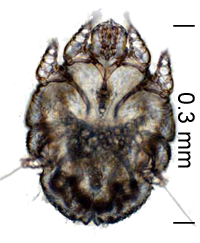
Itchy dog?
Sarcoptic mange causes severe itching. Dogs chew and scratch their skin constantly. They lose hair and the skin is thick and red, especially on the ears, legs and belly.
What causes sarcoptic mange?
It is caused by a mite that lives on the skin of any age dog. It’s also called fox mange. Many dogs catch it from foxes.
Is it contagious?
Sarcoptic mange is highly contagious to other dogs. Humans in close contact with their dog can catch it, too. Although the mites are not able to complete their life cycle on humans, they cause a rash and severe itching before they finally die. Contact your family doctor or pharmacist for advice on treatment.
How is sarcoptic mange diagnosed?
Diagnosis is made by scraping the skin with the side of a scalpel blade and examining it under the microscope. Despite severe itchiness there are often only a small number of mites present on the dog. If all skin scrapings are negative and we are still suspicious we do a treatment trial.
How is it treated?
The spot on treatment Revolution applied weekly for 3 weeks is easy and effective. Sometimes we inject or drench with ivermectin weekly. Ivermectin is not licensed for use in dogs and is dangerous for collie breeds.
All dogs in contact with the affected dog should be treated.
Discard the dog’s bedding before treatment.
If any member of the family develops an itchy skin rash, please tell your doctor that you have been exposed to a dog with sarcoptic mange, also known as scabies.


 Ear infections are very common in dogs, especially breeds with long or hair ear canals like Poodles, Cocker Spaniels and Golden Retrievers. Often they are the first or only sign of doggy hayfever (also known as atopy). Sometimes the infection is secondary to a grass seed.
Ear infections are very common in dogs, especially breeds with long or hair ear canals like Poodles, Cocker Spaniels and Golden Retrievers. Often they are the first or only sign of doggy hayfever (also known as atopy). Sometimes the infection is secondary to a grass seed. We have seen an upsurge in dogs with sun induced skin cancers in the last month or so. Most of these are on the bellies of Staffies or Jack Russells that love to lie on their backs in the sun.These cancers can be difficult to remove completely if they are not caught early and will recur if the sunbaking continues.
We have seen an upsurge in dogs with sun induced skin cancers in the last month or so. Most of these are on the bellies of Staffies or Jack Russells that love to lie on their backs in the sun.These cancers can be difficult to remove completely if they are not caught early and will recur if the sunbaking continues.